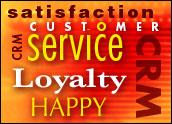
Loyalty card programs operated by grocery and drug retailers have been focused on rewarding shoppers for isolated activities. Typically, retailers dole out extra points for buying Brand A today or discount the price of Brand B during a given week and not much more. But now these loyalty programs are growing up, and retailers are trying to change the reputations they have for granting only short-term returns.
“Trends in drugstore and grocery loyalty programs have everything to do with the maturity of programs within the industry,” said Ed Logan, senior vice president of client services for Harte-Hanks Inc. of Billerica, Maryland. “When they first launched, they were heavy with event-based things and promotions.”
“We are seeing a shift in loyalty card programs,” said Tony Bosco, vice president and management supervisor of the co-marketing division of DVC Worldwide, Morristown, N.J. “All manufacturers are showing interest in what’s going on with loyalty card programs. If manufacturers are not leveraging loyalty, they’re losing their grip on their consumer base and losing the opportunity to guide them through the category with better messaging.”
To accomplish this transition, grocery and drug retailers have enlisted consumer packaged goods (CPGs) manufacturers in greater numbers than ever before. Past perceptions of loyalty programs simply as a way for retailers to meet volume goals have given way to manufacturers’ realization that they can also serve as channels for encouraging consumers to buy into their brands. As such, achieving customer satisfaction with the brand has trumped pricing as the primary goal of consumer packaged goods.
Customer Central
The Coca-Cola Co. is among the CPGs participating in this trend. “We think the retail marketplace is going through a significant amount of change right now, and the consumer is really in the center of this change,” said Sean Seitzinger, director of retail marketing for the company.
Retailers are trying to wean themselves off of discounting to provide relevance to the customer instead. “It’s very much about targeted connections with customers,” Seitzinger said. “[Retailers are] moving away from a traffic focus to delivering value to their customers.”
To this end, grocery and drug retailers have flung open their doors to manufacturers, enlisting their resources to build shopper loyalty and assess customer satisfaction in a hands-on, locally focused way.
Seitzinger says Coke works locally to help retailers “understand what relevancy looks like, how consumers define value and how they define why they shop.”
Customer satisfaction depends on strong relationships between customers and the retailers that carry their preferred brands, he said.
Personal Touch
Since consumers typically belong to several grocery and drug loyalty card programs, manufacturers need a strategy for offering “a different voice at each retailer, because people visit different retailers for different reasons,” said DVC’s Bosco.
Coke has begun to move away from national programs to local activities that are relevant to specific customer interests. The company collaborates with individual retailers on marketing projects that are intended to have more intangible effects than, for instance, a discount offer in the weekly newspaper.
Coke’s current joint efforts with retailers are focused on family and friends. This fall many of the promotions Coke ran via grocery and drug loyalty programs were linked to football tailgating, because this is an activity in which friends and family get together. When an Albertsons grocery store on the West Coast wanted to have a county fair event for its best customers, Coke contributed a dunk tank.
“It was a way to really differentiate ourselves,” Seitzinger says. “Coke has to have a universal message but also develop relevancy to different kinds of consumers.”
Measurables Matter
Brand manufacturers generally don’t care where consumers buy, as long as they buy. Increasingly, however, CPG manufacturers are looking for opportunities that allow direct measurement of the effects of targeted marketing promotions — beyond Nielsen and IRI numbers. Given that they have well-integrated loyalty programs and straightforward data at hand, grocery and drug retailers can be an effective starting point for measuring customer satisfaction.
“Retailers love to see business results,” Coke’s Seitzinger said, “but they won’t move forward without customer satisfaction. Almost every piece of research that goes into a launch has a business piece but also has a consumer attitudinal piece.”
To determine customer satisfaction, packaged goods companies use the standard measures of case volume moved, but with the help of loyalty program data they also can measure such phenomena as growth in customer satisfaction, customer response to the loyalty program, consumer attitude regarding the brand, sustainable sales lift, category sales shifts, and information about their customers and the non-competing categories they shop.
Careful Analysis
Despite potential benefits, depending on the product line and the customer base, loyalty programs can deliver mixed results. Some CPGs have found loyalty card programs to be ineffective in building customer loyalty, — but data must be analyzed carefully to know for sure.
Baby products manufacturer Gerber has participated in CPG promotions through CVS Pharmacy. Cathy Hobb, national account manager for Gerger, thought the stores’ Extra Care loyalty card program would serve as an alternative marketing channel that would generate new customers and incremental sales — maybe even a willing product-testing crowd. But it didn’t work out. “We do not feel that the program brought any additional sales to Gerber,” she says. “Due to the high cost and low response, I cannot justify the dollars.”
Hobb said, however, that short staffing on individual retail accounts meant Gerber may not have probed CVS data on Extra Care customers (in aggregate) adequately. So, rather than scrap promotions through retail loyalty programs altogether, Gerber decided to give the channel another chance. Hobb expects to have a dedicated team in the near future to be able to analyze data and determine more precisely the effects of Gerber’s participation in such programs.
DVS’s Bosco is convinced that the programs make sense for most CPGs. “CVS Extra Care has almost 40 million members,” he said. “With numbers like that, even employing the segmentation Gerber neglected in its initial efforts, a CPG can make an impact within a subset and overall within the database.”
Segmenting Data
Some grocery and drug retailers have begun segmenting their loyalty program data, looking at products purchased but also combinations of products or categories purchased as well as frequency of shopping trips, monetary value of baskets at checkout and other patterns.
Determining past purchase history is the primary driver for segmentation. The promoting brand gets the opportunity to nurture customer satisfaction among current users. And if it targets users of competing products through segmentation of the retailer’s loyalty program database, it also can satisfy switchers, Bosco said.
“Segmentation is worthwhile if it drives a stronger bond with the retailer and the consumer,” said Bosco.
This sophisticated segmentation assesses not just what best customers are buying but what they’re not buying, said Harte-Hanks’ Logan.
“A lot of these programs started and were born out of a Wal-Mart defense strategy,” Logan said. The huge retailer with little personal connection to the customer is focused solely on pricing superiority. As such, smaller retailers are forced to look elsewhere for their edge.
“They are all looking for the best Wal-Mart defense strategy, and customer satisfaction is it,” Logan said.





















































